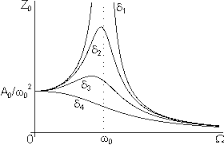Not very sure about all the concepts? Revise it all here!
1
Characteristics of SHM
- A restoring force must act on the body.
- Body must have acceleration in a direction opposite to the displacement and the acceleration must be directly proportional to displacement.
- The system must have inertia (mass).
- SHM is a type of oscillatory motion.
- It is a particular case of preodic motion.
- It can be represented by a simple sine or cosine function
2
Displacement as a function of time is a simple harmonic motion
Standard equation of simple harmonic motion is:
Any general equation satisfying the above criterion represents a simple harmonic motion.
i.e.
Any general equation satisfying the above criterion represents a simple harmonic motion.
i.e.
3
Velocity as a function of displacement
General equation of SHM for displacement in a simple harmonic motion is:
By definition,
or, ... (1)
Since
From equation (1).
By definition,
or, ... (1)
Since
From equation (1).
4
Find acceleration from displacement as a function of time
In SHM for displacement has a time dependence equation in the form
By definition,
or,
Acceleration is given by
or
By definition,
or,
Acceleration is given by
or
5
Differential Equation of SHM
General solution to this equation is:
On Putting the boundary conditions specific to the given problem we get:
6
Problem on kinetic energy, potential energy and total energy of a mass attached to a spring in SHM
Example: A mass is attached to a spring of stiffness executing SHM. It has amplitude and velocity at the equilibrium position is . Find the total energy of this spring mass system.
Solution:
At the extreme position of the spring it has only potential energy since velocity is zero:
At the equilibrium position it has no stretch in the spring.
Kinetic energy at this instant:
At any instant of time during the motion:
Total energy = KE + PE = =
Solution:
At the extreme position of the spring it has only potential energy since velocity is zero:
At the equilibrium position it has no stretch in the spring.
Kinetic energy at this instant:
At any instant of time during the motion:
Total energy = KE + PE = =
7
Angular Displacement and Angular Velocity of a Physical Pendulum

Angular Displacement of Physical pendulum:
Angular Velocity of physical pendulum:
Angular Velocity of physical pendulum:
8
Write total force and write differential equation of motion for damped oscillations
Total force in damped oscillations is:
(Due to damper and spring.)
Final differential equation for the damper is:
(Due to damper and spring.)
Final differential equation for the damper is:
Displacement as a function of time in damped SHM
9
Write force equation and differential equation of motion in forced oscillation
Example: A weakly damped harmonic oscillator is executing resonant oscillations. What is the phase difference between the oscillator and the external periodic force?
Solution:
The equation for forced oscillation in a damped system is given as-
The expected solution is of form Put this is in above equation gives,For resonant oscillation, which is the phase difference between and .
Solution:
The equation for forced oscillation in a damped system is given as-
The expected solution is of form Put this is in above equation gives,For resonant oscillation, which is the phase difference between and .
Write displacement as a function of time in forced oscillation
The object oscillates about the equilibrium position . If we choose the origin of our coordinate system such that , then the displacement from the equilibrium position as a function of time is given by:
10
Oscillations when driving frequency is close to natural frequency

Amplitude of oscillations in shown in the attached plot and given by the formula:
where
Driving Force
Mass
Driving Frequency
Damping Frequency and Damping constant
When , amplitude of oscillations is maximum.
which is a very large value.
This is the phenomenon of resonance in forced oscillations.
where
Driving Force
Mass
Driving Frequency
Damping Frequency and Damping constant
When , amplitude of oscillations is maximum.
which is a very large value.
This is the phenomenon of resonance in forced oscillations.


